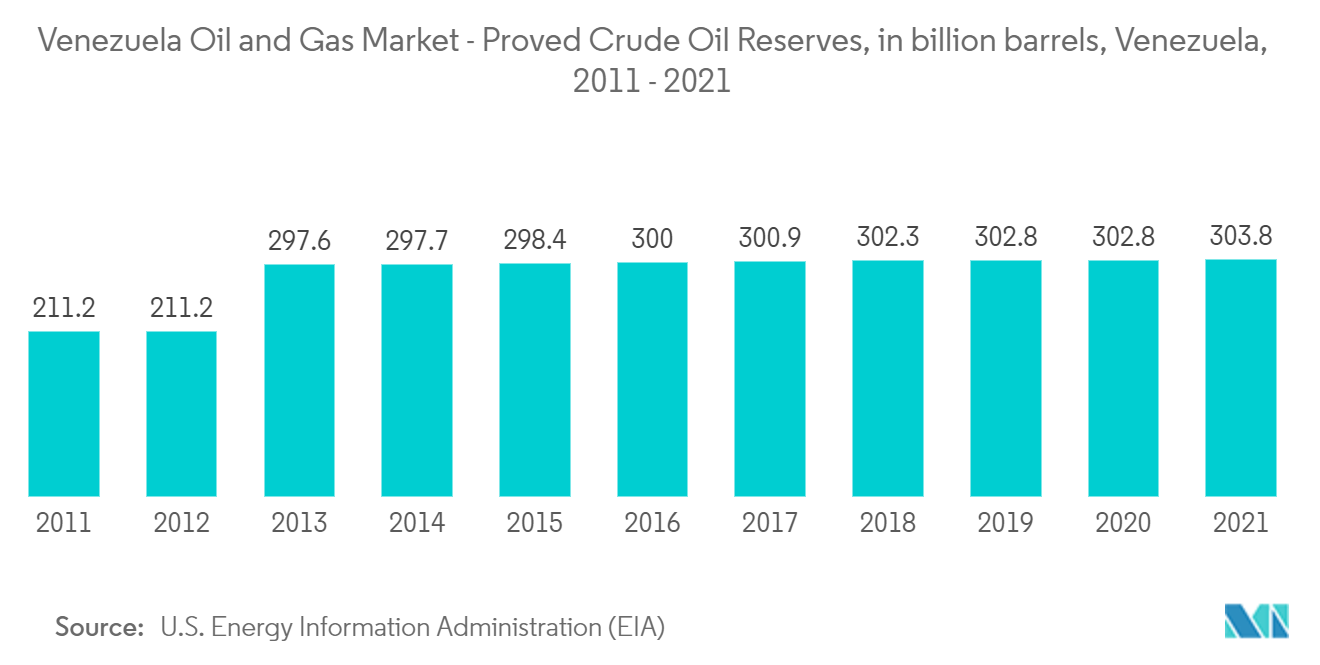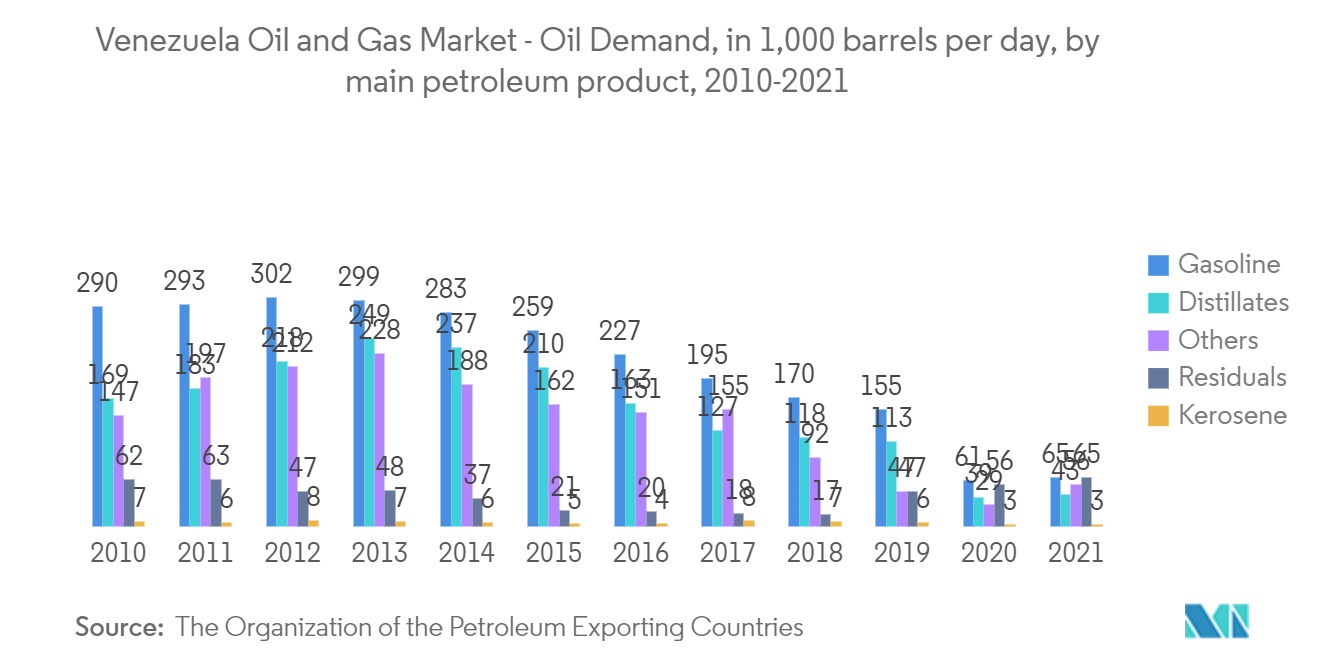Market Trends of Venezuela Oil and Gas Industry
This section covers the major market trends shaping the Venezuela Oil & Gas Market according to our research experts:
Upstream Sector as a Prominent Market
Venezuelan upstream includes the exploration and production of crude oil and natural gas from its Orinoco Oil Belt (OOB) in central Venezuela. Over nineteen thousand square miles, OOB has been divided into 36 blocks within four exploration areas: Boyaca, Junin, Ayachucho, and Carabobo. Venezuela allows foreign firms to invest, but the country requires PdVSA (state-owned oil and gas company) to hold at least 60% equity in joint ventures.
In 2021, crude oil reserves in Venezuela reached close to 304 billion barrels, more than triple the figure reported at the beginning of the previous decade. Venezuela boasted the largest crude oil reserves worldwide. However, the country's oil production dipped below one million barrels per day in recent years, a drop of more than threefold compared to a decade earlier. Venezuela awarded 18 natural gas exploration and production licenses to private companies to attract foreign investment. However, only five of those licensees have been operating (including three in which PdVSA Gas serves as a minority partner). In November 2022, Chevron Corporation received a US license allowing the second-largest US oil company to expand its production in Venezuela and bring the South American country's crude oil to the United States.
Due to the above-mentioned factors, the upstream sector is expected to dominate the Venezuelan oil and gas market during the forecast period.

Decrease in Capital Expenditure Hinders the Market's Growth
Venezuela's oil production peaked in 1970 when the country produced nearly 3.8 million bpd. The country nationalized its oil and gas operations and established Petróleos de Venezuela SA as a state-owned oil and gas company in 1976. Later in 1997, it invited foreign companies to invest in its hydrocarbon resources.
The country's hydrocarbons industry has completely collapsed due to political mismanagement, the dismantling of Petróleos de Venezuela SA's managerial structures, and deviations in longstanding company policy implemented by the government of Nicolas Maduro since 2014. These factors have undermined the oil and gas sector and destabilized the national economy.
However, in 2021, the country witnessed slight demand for oil products, which amounted to 232 thousand barrels per day, a growth of roughly 23% compared to 2020. Gasoline and residuals made up the largest share of the country's demand.
The country is under financial debt, and there are limited foreign companies to fund the oil and gas projects, resulting in declining production over the years and is expected to decline during the forecast period due to political instability across various parts of the country and the United States sanctions on the nation.
As per the sanctions, the country's government and PdVSA are prohibited from accessing the United States financial market. The sanctions prohibited transactions with the Maduro government (Venezuela), thus leaving the country with limited investment.
Due to the above-mentioned factors, a decrease in capital expenditure is expected to hinder the market's growth during the forecast period.


